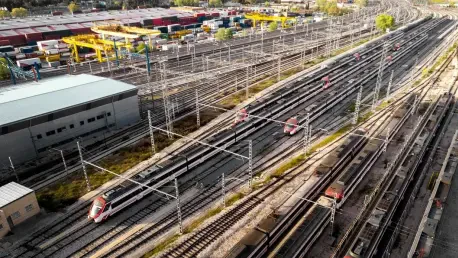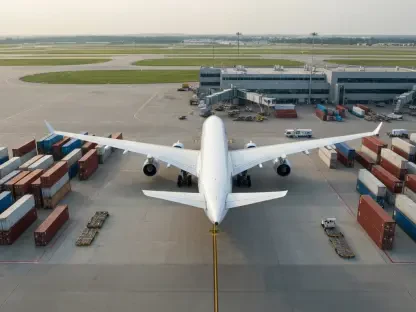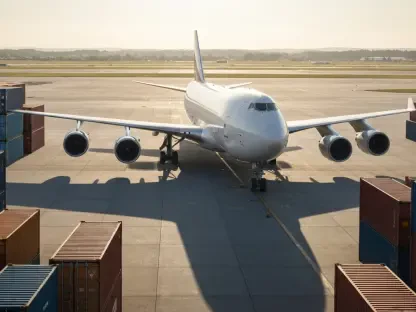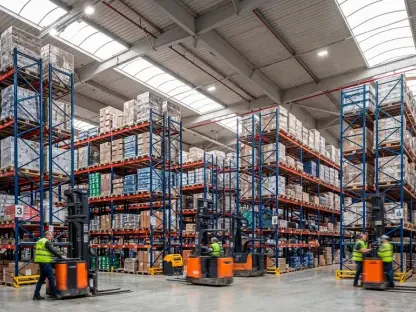Two decades after Hurricane Katrina struck the Gulf Coast on August 29, 2005, the devastation it left behind still echoes through the rail and transit systems of New Orleans and the Mississippi Gulf Coast, reshaping communities and infrastructure alike. With 1,392 lives lost and damages totaling $125 billion, the storm obliterated critical infrastructure, including iconic streetcar lines and vital Amtrak routes. This roundup gathers diverse opinions, tips, and reflections from industry experts, transit advocates, and community stakeholders to explore how the region has rebuilt its rail systems over the past 20 years. The purpose is to uncover lessons learned, highlight ongoing challenges, and spark discussion on building resilience for the future.
Assessing the Storm’s Lasting Impact on Rail Infrastructure
The immediate aftermath of Katrina painted a grim picture for rail systems along the Gulf Coast. Flooded tracks, submerged facilities, and suspended services became stark symbols of the disaster’s reach. Industry observers note that the complete halt of Amtrak operations and the flooding of key hubs like the Mid-City car barn in New Orleans underscored a vulnerability in transit planning that few had anticipated. Many point out that the societal toll—particularly on vulnerable populations without evacuation means—amplified the urgency to rethink disaster response strategies tied to public transportation.
Community advocates often emphasize the cultural blow dealt by the shutdown of New Orleans’ streetcar lines, long seen as a heartbeat of the city. Their perspectives highlight how the destruction went beyond physical damage, striking at the identity of a region reliant on these historic systems for daily life and tourism. Some argue that the initial focus on emergency response sidelined transit recovery, delaying critical repairs and exposing systemic gaps in prioritizing infrastructure in crisis scenarios.
A contrasting view from urban planners suggests that while the damage was catastrophic, it also revealed opportunities for modernization. They note that the forced pause in operations allowed for a reassessment of aging rail networks, pushing discussions on how to rebuild stronger rather than simply restoring what was lost. This diversity in thought sets the stage for a deeper look into the recovery process and its varied interpretations.
Rebuilding Tracks: Perspectives on a Long Journey
Early Challenges and Debates on Revival
In the chaotic months following the storm, the rail and streetcar systems faced an uncertain future. Transit historians recall how facilities like the Union Passenger Terminal were repurposed for emergency needs, such as temporary jails, reflecting the sheer desperation of the situation. Many in the sector debated whether restoring rail services was even feasible given the scale of destruction and the immense costs involved, with some suggesting a permanent shift to alternative transport modes.
Policy analysts point out that early recovery efforts were hampered by logistical bottlenecks and inadequate federal support. They argue that the initial focus on basic survival needs left transit infrastructure as a secondary concern, prolonging the suspension of vital services. This perspective sheds light on why some routes, even 20 years later, remain unrevived, fueling discussions on government accountability in post-disaster rebuilding.
On the other hand, local transit workers and engineers share stories of grit and determination during those early days. Their accounts focus on small victories, like salvaging damaged equipment under harsh conditions, as evidence that grassroots efforts played a pivotal role despite systemic shortcomings. This blend of skepticism and hope illustrates the complex starting point of the recovery narrative.
Phased Restoration and Uneven Progress
As recovery unfolded, the return of rail services followed a staggered timeline that drew mixed reactions. Industry reports highlight that Amtrak’s City of New Orleans and Crescent lines resumed by late 2005, while streetcar routes like St. Charles Avenue saw phased comebacks between 2006 and 2008. Many in the transit sector praise these milestones as proof of technical perseverance, crediting local initiatives and partnerships with companies for rebuilding critical infrastructure.
However, not all stakeholders view the progress through a positive lens. Regional planners express frustration over persistent gaps, such as the Sunset Limited’s suspended segment east of Mobile, which remains a sore point even now. They argue that funding shortages and bureaucratic delays have created an uneven landscape of recovery, where some areas thrive while others languish, raising questions about equitable resource allocation.
Community voices add another layer, noting that while expansions like the Loyola Avenue line signal growth, reduced population numbers in New Orleans dampen demand for restored services. Their input suggests a disconnect between ambitious projects and actual ridership needs, prompting a broader debate on whether current efforts align with long-term community realities. This spectrum of opinions reveals the multifaceted nature of rebuilding.
Cultural Icons or Practical Assets?
New Orleans’ streetcars, especially the historic 1923 Perley E. Thomas cars, hold a special place in recovery discussions, often framed as symbols of resilience. Tourism experts assert that these lines are more than transport; they embody the city’s spirit, drawing visitors and sustaining local pride. They advocate for continued investment, viewing streetcars as a unique asset that differentiates the region in a competitive travel market.
Conversely, urban economists caution against over-reliance on nostalgia as a driver for transit funding. They point out that with a smaller population base compared to pre-Katrina levels, the economic justification for extensive rail networks is shaky. Their stance urges a balance between preserving heritage and adapting to modern fiscal constraints, challenging the notion that cultural value alone can secure future growth.
Transit advocates offer a middle ground, suggesting that streetcars and rail systems can serve dual purposes if integrated with broader urban planning. They propose leveraging these assets to address equity issues, ensuring access for underserved areas while maintaining their iconic status. This nuanced dialogue reflects the tension between sentiment and practicality in shaping the region’s transit identity.
Innovations and Preparedness Post-Katrina
Katrina’s aftermath spurred a reevaluation of disaster preparedness within the transit sector, a shift widely acknowledged by policy experts. They note that new protocols for infrastructure resilience, such as elevated tracks and flood-resistant designs, have emerged as direct responses to the storm’s lessons. These advancements are often cited as critical steps toward safeguarding rail systems against future calamities.
Technology consultants bring a forward-looking angle, speculating on how emerging tools like predictive analytics could revolutionize maintenance and emergency planning. Their insights suggest that digital innovations might offer scalable solutions, not just for the Gulf Coast but for other disaster-prone regions, broadening the scope of Katrina’s impact on national transit strategies.
Meanwhile, social justice groups stress that preparedness must extend beyond physical infrastructure to include equitable access. They argue that recovery efforts exposed disparities in who benefits from restored services, pushing for policies that prioritize marginalized communities in future planning. This intersection of innovation and fairness highlights a holistic approach to rebuilding that continues to evolve.
Key Takeaways from Two Decades of Reflection
Synthesizing the varied perspectives, several core lessons emerge from 20 years of rail recovery in the Gulf Coast. Industry leaders underscore the importance of robust disaster planning, advocating for preemptive investments in resilient infrastructure to mitigate future disruptions. Their consensus points to a need for proactive rather than reactive measures, a shift in mindset that could redefine transit durability.
Community stakeholders and advocates stress the value of centering local needs in recovery frameworks. Their tips include fostering transparent dialogue between residents and policymakers to ensure that transit solutions reflect actual demand and cultural priorities. This bottom-up approach is seen as essential for sustaining public trust and engagement in long-term projects.
Urban planners and analysts, meanwhile, call for sustained federal and state funding to address lingering gaps in service. They suggest that blending public-private partnerships with government support could unlock resources for routes still awaiting revival. Together, these insights paint a picture of cautious optimism, tempered by recognition of the work still ahead.
Looking Back and Moving Forward
Reflecting on the past 20 years, the journey of rail recovery after Hurricane Katrina revealed both the depth of devastation and the strength of human resolve across New Orleans and the Mississippi Gulf Coast. Diverse voices from industry experts to local advocates illuminated a path marked by painstaking restoration, cultural preservation, and hard-won lessons in resilience. The discussions captured a shared commitment to rebuilding, even as opinions differed on the pace and priorities of that process.
For those invested in the future of transit, actionable steps emerged from this retrospective. Exploring innovative funding models to support stalled projects, engaging with community-driven initiatives to align services with current needs, and staying informed on national policies affecting regional rail are all viable next steps. As the Gulf Coast braces for future challenges, fostering collaboration across sectors remains a promising avenue to ensure that rail systems not only endure but thrive in the decades to come.









